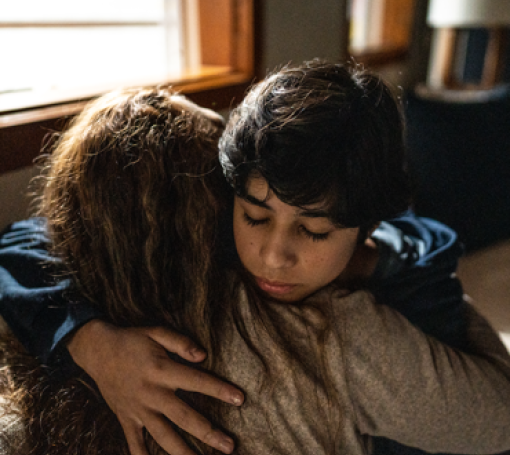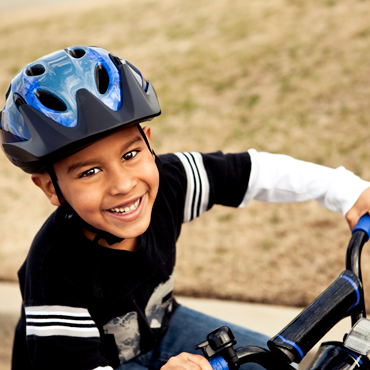As parents, we want to keep our children safe. One of the easiest ways to protect them is by making sure they wear a helmet. Whether your child is biking through the neighborhood or carving down snowy slopes, a helmet can be the difference between a minor fall and a life-changing injury.
Why Helmets Matter
Accidents happen in the blink of an eye, but head injuries can have lasting effects. Helmets have been proven to significantly reduce the risk of both minor and serious head injuries.
The Right Fit: How to Wear a Helmet Properly
A helmet must fit correctly to provide maximum protection. Here’s how to make sure your child’s helmet does the job:
- Fit: The helmet should sit level on your child’s head, not tilting back. It should rest low on their forehead, about 1- 2 finger widths above the eyebrows.
- Stability: The helmet should stay in place and not slide around, fall forward, or cover your child’s eyes. Helmets come with fit pads to help make adjustments.
- Straps: The straps should form a snug "V" under the ears. The chin strap should be loose enough so your child can breathe, but tight enough so that no more than 2 fingers fit between the strap and the child’s chin.
Choosing the Right Helmet
- Type: Different activities require different helmets. Always use the correct type for biking, skiing, or other sports.
- Safety Standards: Buy helmets that meet safety standards. Look for a CPSC (Consumer Product Safety Commission) or Snell sticker inside for bike helmets. For skiing helmets, check for an ASTM or Snell sticker inside.
- Condition: Regularly check helmets for cracks or damage. Remember, bike helmets and most ski helmets need to be replaced after one crash.
Setting Kids up for Success: The Role of Parents
Children should wear helmets as soon as they start riding anything with wheels. Starting early helps them establish a habit for life. Kids are more likely to wear helmets when parents set clear rules—and when they lead by example. When you wear a helmet on bike rides or during winter sports, you send a powerful message about the importance of safety.
A Simple Step with Lifesaving Impact
Pediatricians see firsthand how helmets prevent serious injuries. Making sure your child wears a helmet—whether riding their bike, scooter, or skis—helps protect their health and their future.
Resources:
Keep Reading
View All Posts
Helping Kids Breathe Easier
By checking asthma control at every well care visit, we can identify changes early and make sure each child has the support they need to breathe comfortably and stay active.

Protecting Your Newborn from Hepatitis B
Learn why the birth dose of the hepatitis B vaccine matters for every baby.

Community Support for Youth Suicide Prevention
Learn how families can recognize warning signs, foster open communication, and create a supportive environment to help prevent suicide among teens.

